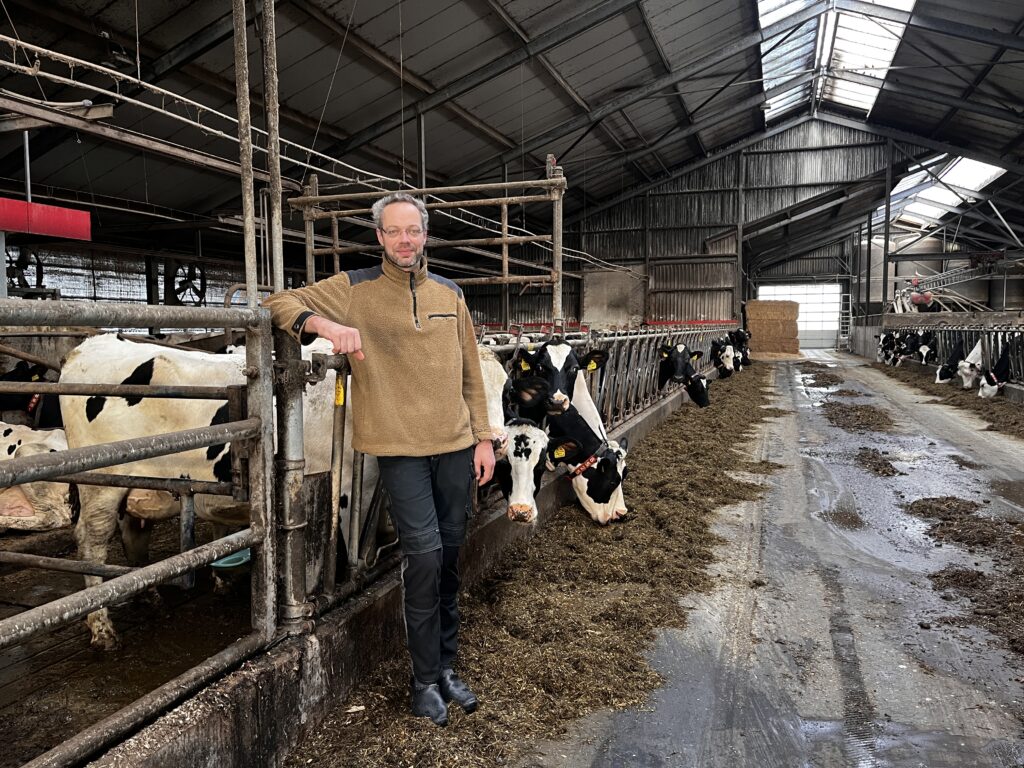Improve milking robot efficiency with ProSquare teat liners
‘Square teat liners increase milking robot capacity by 5 cows per robot, which means we can milk 20 cows more’
In Wons, Friesland, dairy farmers Jouke and Arend op de Hoek milk 280 cows using four milking robots. “The maintenance costs of our milking robots are around €30,000 per year,” says Jouke op de Hoek. “So we must get the most out of their capacity.”.
The brothers have always had a somewhat slow-milking herd. Over a decade ago, when they were transitioning to a new freestall barn, they tested rubber square liners as an alternative to round silicone ones. “We immediately saw a big improvement in milking speed,” Jouke recalls. “So when we moved to the new barn, we equipped all robots with square liners. This allowed us to milk five extra cows per robot—20 extra cows in total. That makes a real difference.”
2,250 litres per day
Efficiency is the key word on the farm and with a few mouse clicks, Jouke draws up the main efficiency key figures for the milking robot on the screen. ‘Daily production averages 32,4 kg of milk with 2.8 milkings. The milking speed fluctuates between 3 and 3.1. The average box time is 6 minutes and 12 seconds, the number of refusals 3.1 and the free time varies per robot between 11% and 17%,’ Jouke lists. High-yielding cows produce approximately 2,250 litres per day, while the heifer group contributes another 1,800 litres. Both groups benefit from improved robot use.
‘The maintenance costs of the milking robots are around €30,000 a year, so you have to use that as efficiently as possible.’
Maintaining free time above 15%
‘We don’t want to be below 15% free time “We never want robot free time to fall below 15%,” Jouke explains. “When it drops too low, it affects milk yield and overall efficiency. We milk with four production groups. The heifer group is milked by one milking robot. These animals are young and fit, so the run on the robot is never a problem for this group. The high-producing cows are milked by two milking robots. Here you do have some more frequent pick-up cows. The fourth robot is for the low-production group. Last week, some more cows were put dry and I have to shift production groups a bit to increase efficiency again,” Jouke explains the differences.
Optimised milking time, maximum 8 minutes
‘The pre-treatment time stands at 2.11 minutes. This seems long, but the cow needs time to let the milk shoot,’ is Jouke’s experience. Udder health specialist Arnold Kuiper confirms his conclusion; ‘Good pre-treatment is important. he total box time is the real measure of robot efficiency. We aim for a maximum milking time of 7 minutes.” Jouke and Arend have gradually reduced the robot’s maximum milking time to 8 minutes per cow. And that is enough to milk the cows properly and get the provided concentrate feed finished. ‘In the robot, they get a maximum of 3.5 kg of concentrate feed per day. If you feed more, you encourage rumen acidification. They have to get most of the concentrate from the TMR ration,’ says Jouke, who is focused on using capacity as efficiently as possible. It is clear that square teat liners have played an important role in this for years.

Get more out of your milking robot
ProSquare rubber square liners are suitable for both conventional and AMS (Automatic Milking System) farms. After installation and adjusting robot settings, results are quickly visible—both in milking efficiency and teat condition. Not only in teat condition, but certainly in a more efficient milking process as well.
Depending on the starting situation, milking speed can increase by 0.1 kg to 0.4 kg per minute. This reduces box time and enables more milkings, positively impacting udder health and overall milk production. The gained free time can also be used to milk more cows.
ProSquare liners can be placed in Lely, SAC and Boumatic milking robots. While some farms may experience a short adaptation period, the long-term benefits include higher throughput and better efficiency.
Better teat condition thanks to square teat liners
A study by Cornell University compared the effects of round versus square liners on teat condition. Results showed that square liners cause significantly less teat tip distortion and damage, leading to healthier teat ends and reduced stress during milking.
